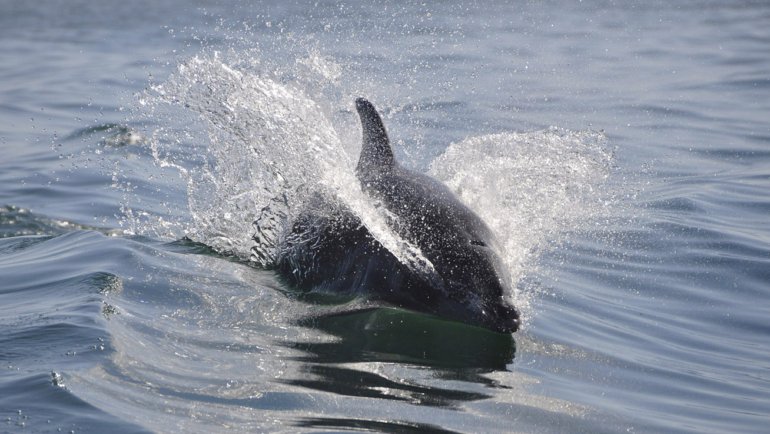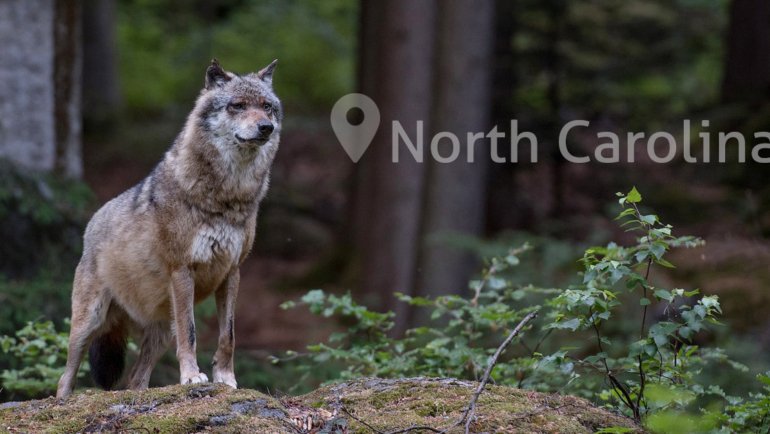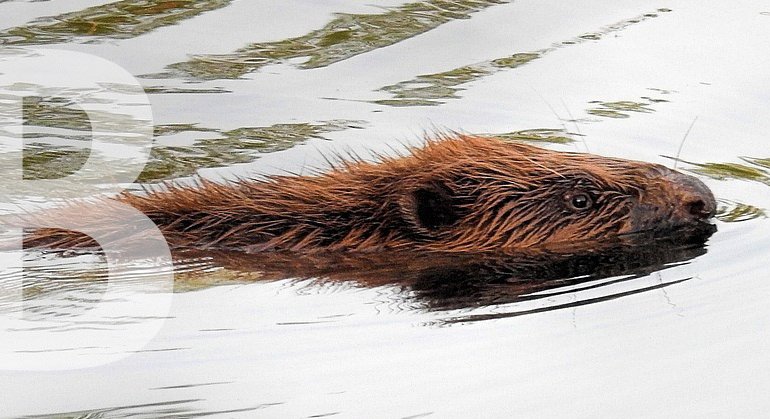Welcome to an in-depth look at the wild boar, an animal that has both fascinated and vexed humans for centuries. Whether it’s their sturdy build, their surprising agility, or their cultural significance across various societies, wild boars are an animal you’ll want to know more about.
In this fact sheet, we’ll dive into their biology, behavior, and interaction with their environment. Read on to become a wild boar expert!
The Wild Boar at a Glance
Classification
| Kingdom: | Animalia |
| Phylum: | Chordata |
| Class: | Mammalia (Mammals) |
| Order: | Artiodactyla |
| Family: | Suidae |
| Genus: | Sus |
| Species: | S. scrofa |
Essential Information
| Average Size: | 3.9–6.6 feet (1.2–2 meters) length |
| Average Weight: | 110–440 pounds (50–200 kg) |
| Average Lifespan: | 10–14 years in the wild, up to 20 years in captivity |
| Geographical Range: | Europe, Asia, North Africa, introduced in the Americas and Oceania |
| Conservation Status: | Least Concern (IUCN Red List) |
Species and Subspecies
The animal commonly known as the wild boar is a member of the species Sus scrofa, which has a number of subspecies that differ in size, color, and geographical distribution. Some notable subspecies are:
- Sus scrofa scrofa: The European wild boar, usually larger and darker than its Asian counterparts.
- Sus scrofa cristatus: The Indian wild boar, known for its slightly smaller size and lighter coloration.
- Sus scrofa ussuricus: Also known as the Ussuri wild boar, native to far-east Russia and parts of China; it’s believed to be one of the primary ancestors of domestic pigs.
These subspecies primarily differ in terms of their physical characteristics, dictated by the different habitats they’ve adapted to over time. Their behavior and overall life cycles, however, remain largely consistent across subspecies.
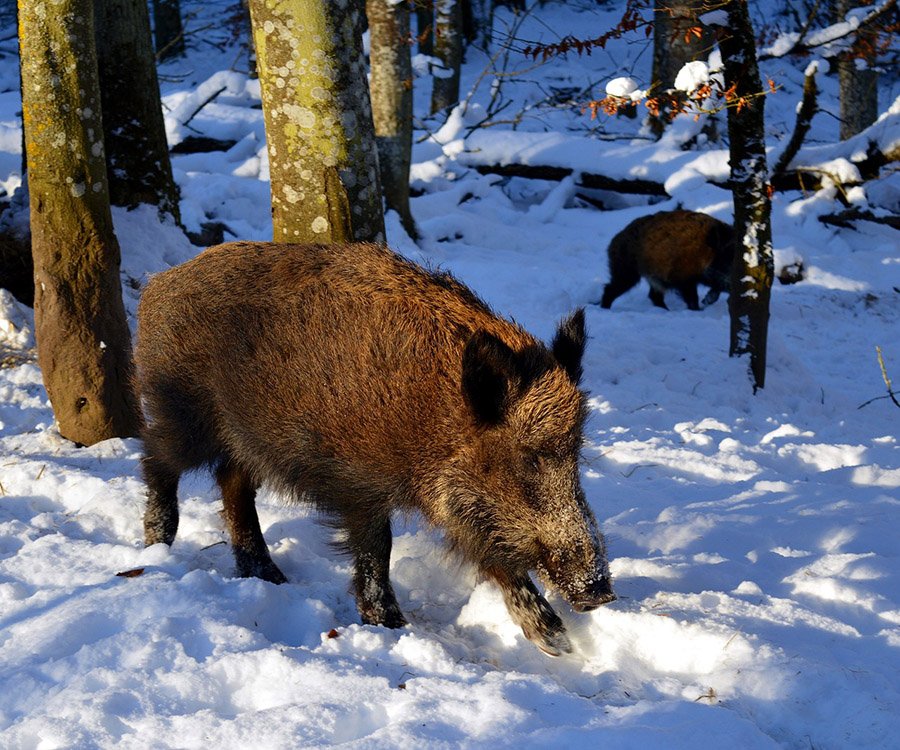
Description
Wild boars display a rugged, robust physique, well-adapted to their often challenging environments. They have a stout, barrel-shaped body supported by relatively short, strong legs.
Their skin is covered by coarse bristles, often in shades of dark brown or black, although coloration can vary depending on the subspecies.
One of their most distinguishing features is the long, curved tusks that protrude from their mouths, more prominently in males. These tusks can grow up to 12 inches (30 cm) in length. Males are generally larger than females and may have a more distinct “mane” of fur running down their backs.
Males are generally larger than females. While a male can weigh up to 440 lbs (200 kg), females generally weigh around 175 – 220 lbs (80 – 100 kg).
Habitat and Distribution
The wild boar has an impressively wide geographical range. While they are native to parts of Europe, Asia, and North Africa, they have also been introduced to the Americas and Oceania.
They are highly adaptable creatures and can be found in a variety of habitats including forests, grasslands, and wetlands. They even adapt well to human-altered landscapes, which partly explains their widespread distribution.
However, they prefer mixed woodland areas where they have access to both cover and open spaces.

Behavior
Wild boars are primarily nocturnal creatures, especially in regions where they come into contact with humans. However, they can be diurnal in more isolated settings.
They are social animals that live in groups called “sounders,” which usually consist of females and their young. Males generally lead a more solitary existence but may join sounders during the mating season.
Boars communicate through a complex array of vocalizations, body language, and even chemical signals. Vocal sounds range from grunts and squeals to roars and growls, each serving different communicative purposes.
Despite their bulky appearance, wild boars are surprisingly agile and are known to be excellent swimmers. They are also intelligent animals, capable of problem-solving and possessing a good memory, especially when it comes to locating food.
Diet and Feeding Behavior
Wild boars are omnivorous creatures with a diet that can vary widely depending on the availability of food in their habitat. Their primary food sources are plant-based, including roots, berries, leaves, and acorns.
They also consume small mammals, birds, and reptiles when the opportunity arises. Additionally, they have been known to raid agricultural lands, consuming crops and sometimes causing significant damage.
Wild boars are opportunistic foragers. They use their strong, well-adapted snouts to root around in the soil for underground food like tubers and roots. They are also known to be persistent and clever in their methods for obtaining food, often traversing long distances in search of a meal.
Predators
In the wild, adult wild boars have few natural predators due to their size and formidable defenses. However, young piglets are vulnerable and may fall prey to predators like wolves, large felines, and birds of prey. In some regions, humans are the primary predators, hunting boars for sport or population control.
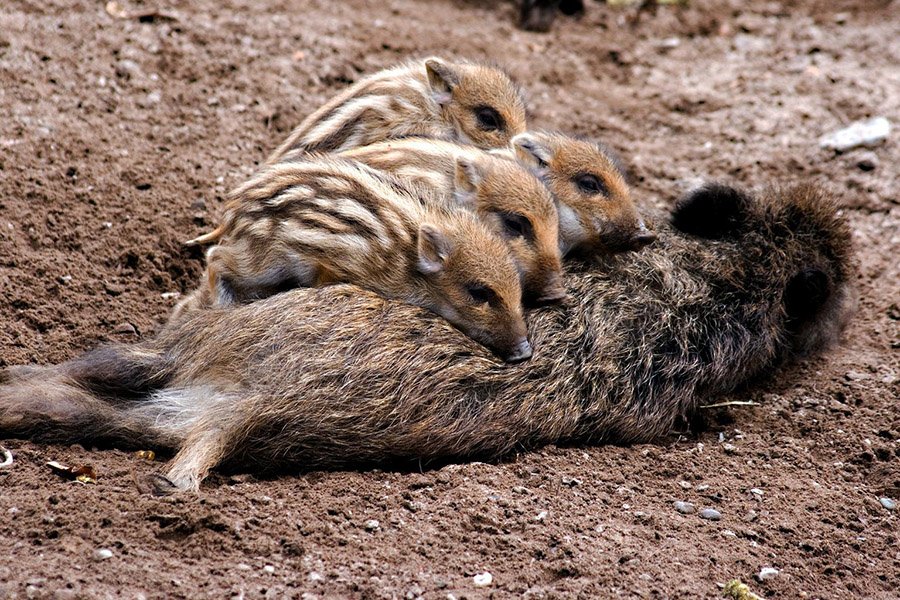
Reproduction and Life Cycle
The mating season for wild boars occurs in late autumn and early winter. During this time, males will join sounders and may engage in aggressive fights to establish dominance and mating rights.
The gestation period lasts about 112-115 days, after which a litter of 4 to 6 piglets is generally born. The piglets are born striped and weigh about 2.2 lbs (1 kg). They are weaned at around 3-4 months of age.
Female boars are very protective of their young and will often choose secluded locations to give birth. The piglets will stay with their mother for about one year before they become more independent and start to venture out on their own.
Conservation and Threats
The wild boar is generally classified as Least Concern by the IUCN. However, in some specific areas, their numbers have been significantly affected due to habitat loss, hunting, and other human activities.
The most significant threat to the wild boar population is human activity, including habitat destruction and hunting. In some regions, they are considered pests because of the damage they can cause to agricultural lands.
There are not many specific conservation programs directed solely at the wild boar, but broader wildlife conservation efforts often encompass their habitats. Some regions have implemented hunting restrictions to control populations in a sustainable manner.
Fun Facts
- Social Animals: Wild boars live in groups known as “sounders,” which are usually made up of females and their young.
- Natural Swimmers: These animals are excellent swimmers and can cover long distances in water.
- Omnivorous Diet: Despite their reputation for being fierce, most of their diet is plant-based.
- Seasonal Changes: The coat of the wild boar changes with the seasons—thicker and darker in winter, lighter in summer.
- Culinary Delight: Wild boar meat is considered a delicacy and is featured in various cuisines around the world.
Frequently Asked Questions
Is the wild boar dangerous to humans?
While generally shy and reclusive, wild boars can become aggressive if they feel threatened or cornered. It’s best to observe them from a distance.
How fast can a wild boar run?
Wild boars can run up to speeds of 25-30 mph (40-48 km/h) when they feel threatened.
Are wild boars and domestic pigs the same?
While they belong to the same genus, domestic pigs (Sus domesticus) and wild boars (Sus scrofa) are different species and have been bred for different traits.
What is the lifespan of a wild boar?
The average lifespan of a wild boar is around 10-14 years, although this can vary depending on factors like predation and availability of food.
Do wild boars carry diseases?
Yes, wild boars can carry diseases like African Swine Fever and foot-and-mouth disease, which can be a concern for local agriculture.
